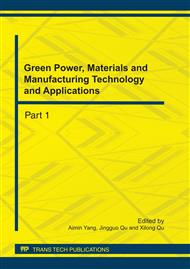p.499
p.504
p.509
p.514
p.519
p.524
p.529
p.534
p.539
Octaepoxysilsesquioxane Cured by Different Curing Agents
Abstract:
Polyhedral oligomeric silsesquioxane (POSS) can be used to prepare organic/inorganic hybrid materials. Octaepoxysilsesquioxane (E-POSS) containing eight reactive epoxy groups in a molecule was synthesized through the hydrolysis and condensation reaction of γ-[(2,3)-epoxypropoxy] propyltrimethoxysilicane. In this study, E-POSS was cured with 4,4'-Diaminodiphenylsulfone diamine (DDS) and methylnadic anhydride (MNA) , respectively. The curing reactions for both systems were monitored by Fourier transforms infrared spectroscopy (FT-IR). And the thermal properties of the cured systems were studied by Thermogravimetric analysis (TGA). The disappearance of the epoxy groups showed that either DDS or MNA was able to cure E-POSS into an organic-inorganic hybrid system with excellent thermal stability.
Info:
Periodical:
Pages:
519-523
Citation:
Online since:
August 2011
Authors:
Keywords:
Price:
Сopyright:
© 2011 Trans Tech Publications Ltd. All Rights Reserved
Share:
Citation:


